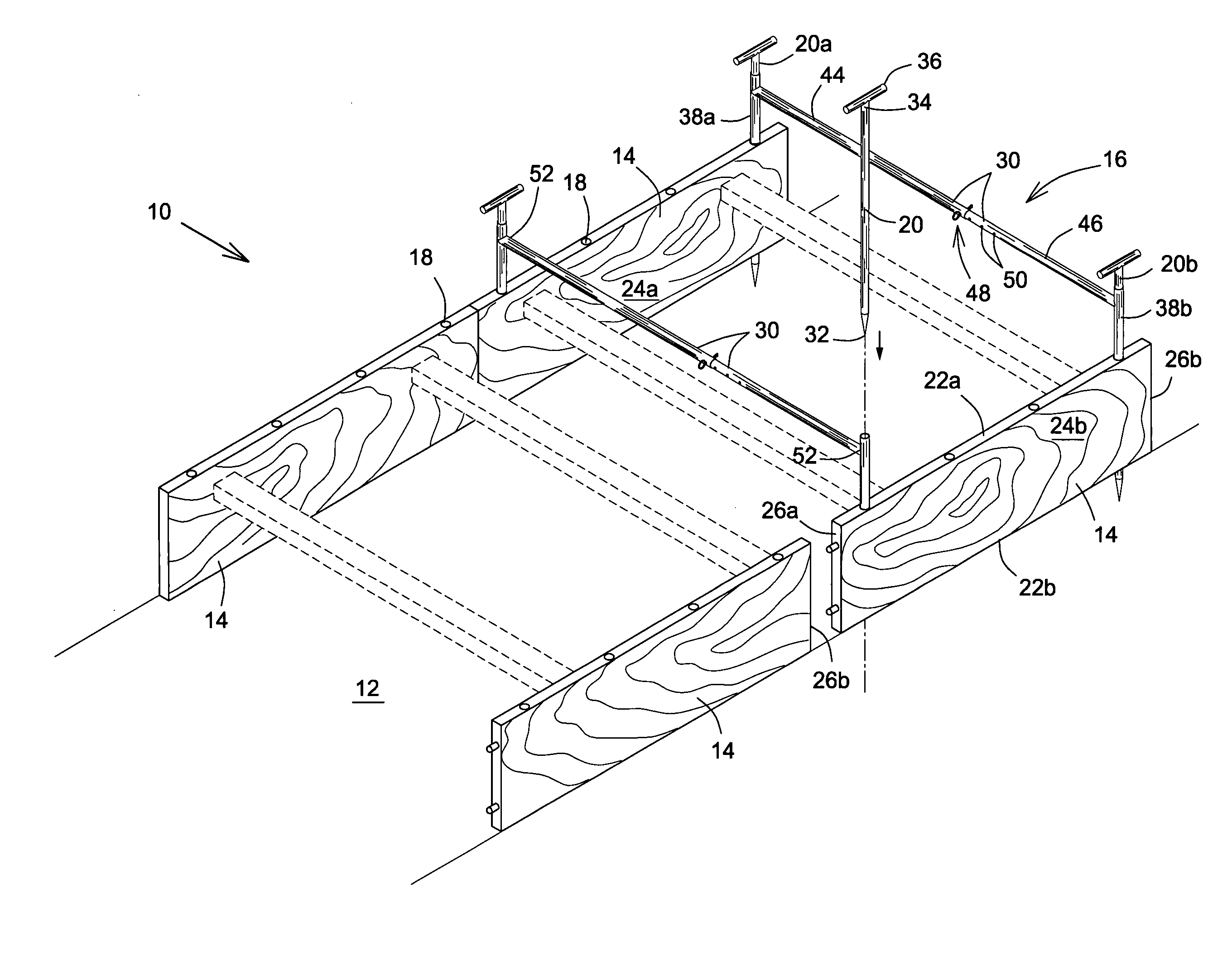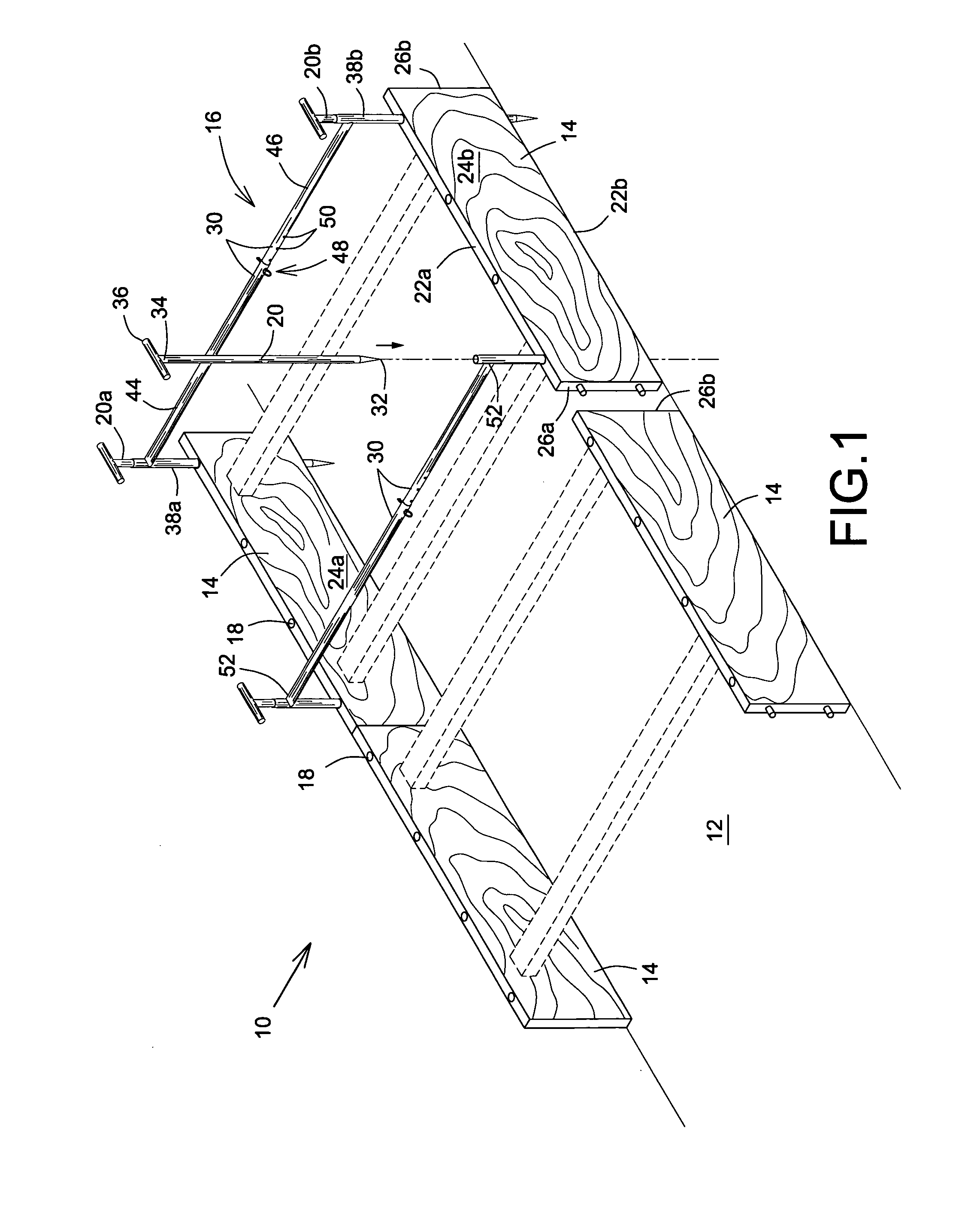Brace, system and method for forming cementitious structures on a ground surface
a cementitious structure and ground surface technology, applied in the field of cementitious structure formation, can solve the problems of cumbersomeness, difficulty and awkwardness in maintaining the spacing members, and achieve the effect of easy adjustmen
- Summary
- Abstract
- Description
- Claims
- Application Information
AI Technical Summary
Benefits of technology
Problems solved by technology
Method used
Image
Examples
Embodiment Construction
[0028]With reference to the annexed drawings the preferred embodiments of the present invention will be herein described for indicative purpose and by no means as of limitation.
[0029]Referring to FIGS. 1 and 2, there is shown an embodiment of a system, shown generally as 10, for forming a cementitious structure, not shown, on a ground surface 12 in accordance with an embodiment of the present invention. The cementitious structure may be any cementitious structure which is typically formed over a ground surface 12, for example, a sidewalk, road curb, walkway, or the like.
[0030]Generally speaking, and as shown in FIGS. 1, 1a, and 2, the system 10 includes at least one pair of moulds 14 and, for each pair of moulds, at least one brace, shown generally as 16. Each mould 14 of each pair has at least one respective brace pathway 18, 18′ defining a pathway from a top side 22a to a bottom side 22b of the mould 14, and between which an inner and outer wall 24a, 24b of the mould 14 extend. Ho...
PUM
| Property | Measurement | Unit |
|---|---|---|
| cementitious structure | aaaaa | aaaaa |
| distance | aaaaa | aaaaa |
| length | aaaaa | aaaaa |
Abstract
Description
Claims
Application Information
 Login to View More
Login to View More - R&D
- Intellectual Property
- Life Sciences
- Materials
- Tech Scout
- Unparalleled Data Quality
- Higher Quality Content
- 60% Fewer Hallucinations
Browse by: Latest US Patents, China's latest patents, Technical Efficacy Thesaurus, Application Domain, Technology Topic, Popular Technical Reports.
© 2025 PatSnap. All rights reserved.Legal|Privacy policy|Modern Slavery Act Transparency Statement|Sitemap|About US| Contact US: help@patsnap.com



